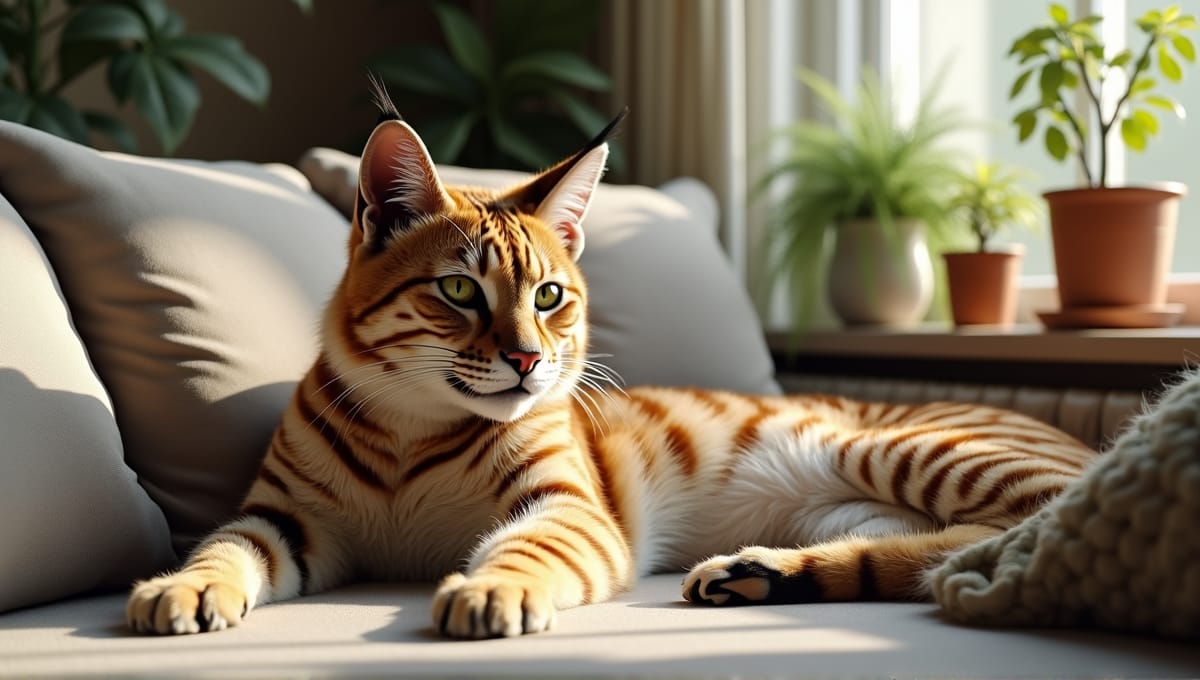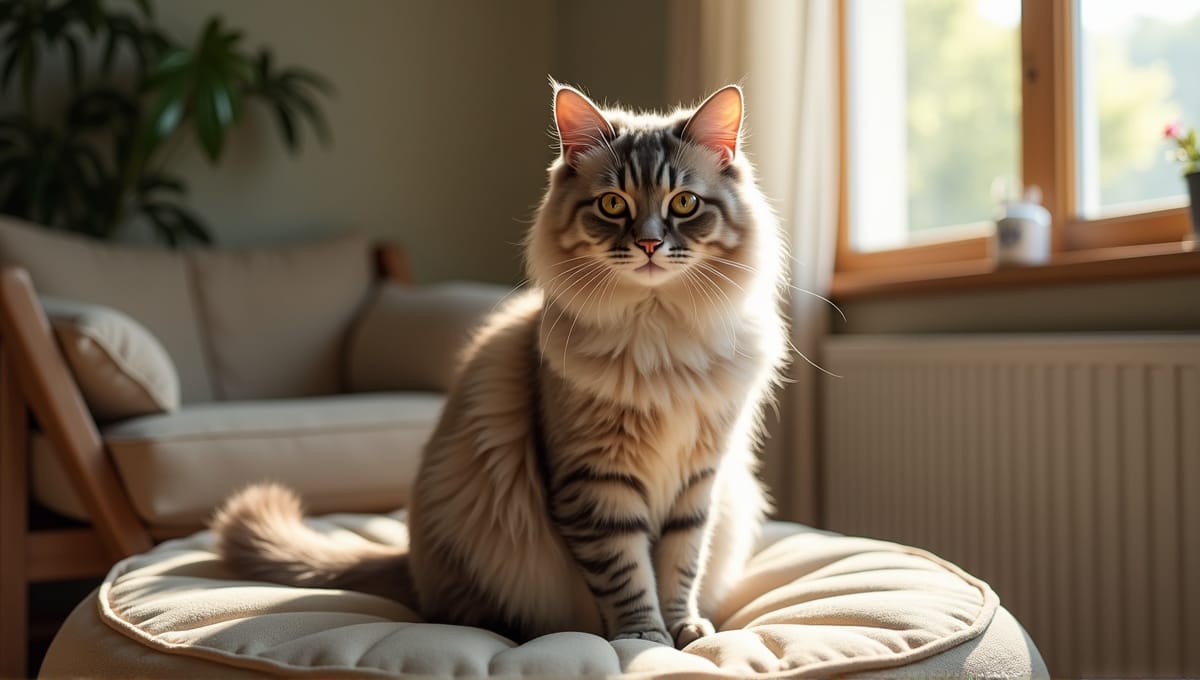As a cat authority, I’ve encountered countless families who suffer from allergies and want a cat. Hypoallergenic cats are a source of optimism, though they aren’t always the answer. Here’s the reality about these unique breeds and whether they could be the solution for your family. Let’s dive into the world of low allergen cats.
Understanding Hypoallergenic Cats

Hypoallergenic cats are not allergy-free cats. They are simply cats that produce fewer allergens than the average cat. The primary cause of cat allergies is a protein called Fel d 1, which is present in a cat’s skin, saliva, and urine. As the cat grooms itself, it spreads this protein all over its body.
Many people mistakenly believe that hypoallergenic cats won’t produce any allergic reactions. While no cat is truly 100% allergen-free, the cat has simply been bred to produce less of the Fel d 1 protein. As a result, you can still experience mild to moderate allergies around the cat.
There are several factors that impact how much allergen a cat produces:
- Genetics
- Gender (males produce more allergens)
- Age
- Diet
- General health
I’ve personally witnessed how these factors can influence allergen production. Even in the same breed of cat, some produce allergens while others don’t. It’s a complex topic that extends beyond the specific breed of cat. Understanding cat breeding can provide insights into how these traits are passed down through generations.
Top Hypoallergenic Cat Breeds
There are a few hypoallergenic cat breeds that are a safe choice for less allergen production. Here are the most common options:
Sphynx: These cats are hairless and the first breed people think of when looking for a hypoallergenic cat. Because they have no fur, they are a popular choice. However, keep in mind they still do produce allergens through their skin.
Siberian: Despite being a fluff ball, this breed produces less Fel d 1, making it a great cat for people with allergies.
Balinese cat: These long, elegant cats shed less than other breeds, which can help reduce allergen spread throughout your home.
Russian Blue: The double coat of the Russian Blue is uniquely dense and traps allergens close to the skin, reducing allergens spread throughout your home.
Bengal: This breed looks like a miniature leopard and has a fine pelty coat that requires less grooming, so there is less saliva on their fur.
Devon Rex: With their short, fine coats, these cats barely shed, keeping allergens to a minimum throughout your home.
Each of these breeds has its own quirks. For example, Sphynx cats need frequent bathing. Siberians are highly intelligent. Balinese cats are talkative. Russian Blues are quiet and gentle. Bengals are extremely active. Devon Rex cats are mischievous.
The Science Behind Cat Allergies
Cat allergies are a bit more complicated than most people think. If you’re allergic to cats, your immune system is overreacting to the Fel d 1 protein, resulting in symptoms such as sneezing, itchy eyes, or even asthma attacks. A study from the National Institutes of Health (NIH) discovered that no cat breed is truly hypoallergenic, as even hairless cats produce some level of allergens.
However, some breeds consistently produce lower levels of Fel d 1. Research from Johns Hopkins University found that cat allergen particles are extremely small and can remain airborne for long periods. This helps explain why cat allergies can be so persistent, even when the cat isn’t in the same room. Male cats tend to produce more allergens than females, especially if they haven’t been neutered. Here’s a quick breakdown:
- Unneutered male: Highest allergen production
- Neutered male: High allergen production
- Female: Lower allergen production
- Spayed female: Lowest allergen production
In my experience working with various cat breeds, I’ve noticed a significant difference in allergen production among these categories. I’ve also seen many families bring a spayed female cat into the home without any allergic reactions, even though previous attempts with male cats didn’t work out. Cat breed intelligence can also play a role in how well a cat adapts to allergy management routines.
Managing Cat Allergies at Home

If you have a cat allergy and living with the remaining 99% of the original list wasn’t helpful, there are still some cat allergy solutions to consider:
Regular cat grooming: Brush your cat regularly to remove loose hair and dander. If possible, have a family member who isn’t allergic to do this task.
Purchase HEPA air purifiers: HEPA air purifiers can remove most of the allergen particles from the air, so place them in the rooms where your cat spends most of their time.
Clean your house frequently: Vacuum all carpets and furniture often. Use a vacuum cleaner with a HEPA filter to ensure that it’s not just spreading the allergens around.
Designate rooms where your cat isn’t allowed: For example, keep your cat out of your bedroom if you’re allergic to cats. It’s best to have at least one room where you can escape the allergens.
Consider giving your cat a bath: Most cats don’t need regular baths, but bathing them occasionally can reduce allergens. However, be careful not to bathe your cat too frequently, as it can dry out their skin.
None of the above grooming techniques manage your allergies. Instead, focus on:
- Wiping down your cat with a damp cloth
- Using pet wipes designed to reduce dander
- Brushing your cat regularly with a fine-toothed comb
These tips have helped countless clients manage their allergies when living with the original list. It’s all about finding the right grooming routine for you and your cat.
Myths vs. Facts About Hypoallergenic Cats
There are several misconceptions about hypoallergenic cats. Let’s discuss and debunk some common myths:
Myth: Long-haired cats are more allergenic.
Fact: Allergenic proteins are not related to hair length. Even short-haired cats can be highly allergenic.
Myth: Cat color influences allergenic levels.
Fact: A cat’s hair color does not impact allergenic protein levels. It’s important to be aware of the Ffel d 1 protein and not hair color.
Myth: Kittens are less allergenic than adult cats.
Fact: Kittens can be equally allergenic to adult cats, and allergenic protein levels depend on the sex of the cat and individual cat genetics.
Myth: Hypoallergenic cats produce no allergenic proteins.
Fact: All cats produce some level of allergenic proteins. “Hypoallergenic” simply means these cats produce fewer allergenic proteins.
These are some of the most common myths I’ve encountered while helping cat owners. Understanding the truth is key to making the right decision about adopting a cat, especially if you have allergies.
Adopting a Hypoallergenic Cat: What to Consider
If you’re thinking about adopting a hypoallergenic cat, here are a few things to consider:
Visit the cat before adopting. This is the most important thing. Your reaction to individual cats can vary even within the same breed. Some shelters or breeders will allow you to have a “trial period” with the cat.
Think about breed-specific characteristics. Each breed has different traits. Sphynx cats require regular baths. Bengals are extremely high energy. Make sure the breed’s traits align with your lifestyle.
Think about potential costs. Hypoallergenic breeds may be more expensive. Here are the average costs for some of the most popular hypoallergenic breeds:
| Breed | Average Cost Range |
|---|---|
| Sphynx | $1,500 – $6,000 |
| Siberian | $1,200 – $4,000 |
| Russian Blue | $400 – $3,000 |
| Bengal | $1,500 – $5,000 |
Consider adoption vs. purchasing your cat from a breeder. Many shelters have hypoallergenic breeds. You can adopt these cats for a significantly lower price, and it gives the cat a home.
Keep in mind, these numbers are simply estimates. You should also consider declaring your new companion cat on your annual taxes.
Living with Cat Allergies: Personal Experiences
Over the years, I’ve heard many anecdotes from cat allergy sufferers who successfully live with a cat. Here are a few strategies that have worked for real cat owners:
- Daily allergy medications
- Regular cat baths (every 2-3 weeks)
- Using allergen-reducing pet shampoos
- HEPA air purifiers in multiple rooms
- Keeping the cat out of the bedroom
One common challenge they mentioned, however, was dealing with allergic reactions from visitors. Some people we spoke to resolved this by designating a “cat-free” room where guests could safely spend time without experiencing allergy symptoms or applying allergen-reducing sprays before visits.
These stories are proof that with a bit of patience and the right approach, many cat allergy sufferers can love a happy, healthy, and allergy-free life with a cat. You just have to experiment and find the right strategy for you. If you’re considering a unique breed, you might want to explore exotic cat breeds to find one that suits your lifestyle and allergy needs.
To Conclude
Hypoallergenic cats are a great solution for people with cat allergies who also love cats. I’ve witnessed these breeds help make homes that were previously off-limits to cats much happier places. Keep in mind that no cat is entirely allergen-free.
Controlling allergies is a combination of selecting the right breed practicing regular grooming and maintaining an allergen-reduced environment. With the right care and knowledge, you can still experience the love of a cat even with allergies. The relationship between humans and cats is too special to miss out on.






